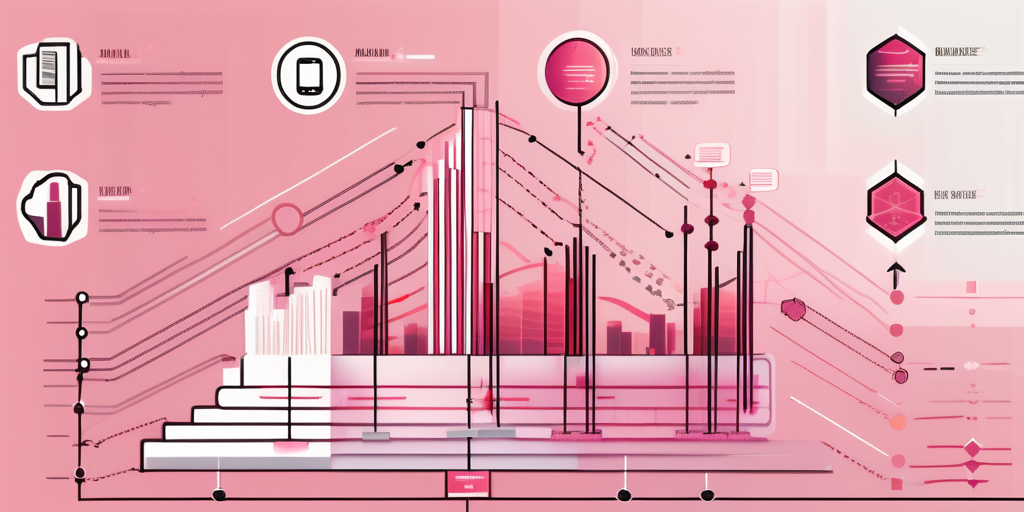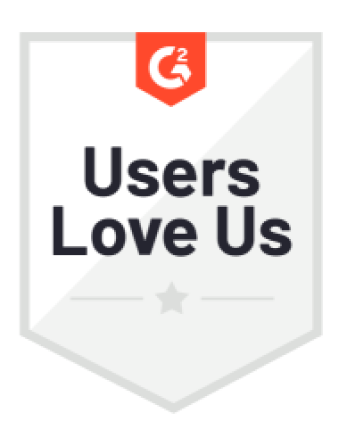Semantic Layer Framework: A Comprehensive Structure for Data Organization
Explore the transformative potential of the Semantic Layer Framework in data organization.

Understanding the Semantic Layer Framework
The Semantic Layer Framework serves as a crucial structure for facilitating efficient data organization within an organization. Its design combines several layers with distinct functions that work cohesively to transform complex data into meaningful information. This framework enables users to interact with data seamlessly, bridging the gap between technical complexity and user-friendliness.
Definition and Function of Semantic Layer Framework
The semantic layer acts as an intermediary between raw data sources and business intelligence tools, providing an abstraction layer that allows end-users to query data without needing an in-depth understanding of the underlying databases. This helps in simplifying data access for non-technical users, enabling them to derive insights without direct interaction with intricate data structures.
Functionally, the semantic layer’s purpose extends beyond mere access. It standardizes different data sources, enforces consistent business definitions, and organizes data into a user-friendly model that mirrors business operations. By providing this logical structure, users can generate reports and conduct analyses that align closely with business metrics, aiding decision-making processes.
Importance of Semantic Layer in Data Organization
In the context of data organization, the semantic layer is paramount for ensuring consistency across multiple data sources. It allows organizations to maintain a singular version of the truth, which is critical for accurate reporting and analytics. This capability significantly reduces discrepancies arising from diverse data interpretations, which can lead to misguided business strategies.
Furthermore, the semantic layer enhances the overall efficiency of data retrieval. By abstracting complex queries and presenting data in a simplified manner, organizations can empower users across all levels to engage with data actively. As a result, it fosters a culture of data-driven decision-making, which can significantly improve business outcomes.
Additionally, the semantic layer plays a vital role in enhancing collaboration among departments within an organization. By providing a common framework for data interpretation, teams can work together more effectively, sharing insights and findings that are grounded in the same understanding of data. This collaborative approach not only improves the quality of analyses but also encourages innovation, as diverse perspectives can contribute to a more comprehensive view of the data landscape.
Moreover, the implementation of a robust semantic layer can lead to significant cost savings over time. By reducing the reliance on IT for data queries and report generation, organizations can allocate resources more efficiently. This self-service capability allows business users to access the information they need when they need it, thereby accelerating response times to market changes and enhancing the agility of the organization as a whole. The semantic layer, therefore, is not just a technical enhancement; it is a strategic asset that can drive competitive advantage in today’s data-centric business environment.
Components of the Semantic Layer Framework
The effectiveness of the Semantic Layer Framework hinges on its core components, each playing a pivotal role in the overall operation and user experience. Understanding these components is crucial for implementing a robust semantic framework that meets organizational needs.
Data Access Layer
The Data Access Layer serves as the foundation of the semantic layer framework. It connects multiple data sources, such as databases, data lakes, and cloud storage systems, ensuring seamless data integration. This layer is responsible for accessing the required data and applying any necessary transformations before making it available for analysis.
Essentially, the Data Access Layer abstracts the underlying complexities of the data sources by providing a uniform interface for data retrieval. This not only simplifies the process of data access but also enhances performance by optimizing queries and ensuring that users only retrieve the relevant data they need. Furthermore, it incorporates security measures to protect sensitive information, ensuring that data access is granted based on user roles and permissions. This layer's ability to handle diverse data formats and protocols also facilitates the integration of new data sources as organizational needs evolve.
Business Logic Layer
At the intersection of technical operation and business needs, the Business Logic Layer defines how data is processed and interpreted. It translates raw data into valuable insights through mathematical calculations, aggregations, and business rule implementations, ensuring that the data reflects the specific context of the organization.
This layer is vital for maintaining consistency in data definitions and logic across the organization. By embedding rules for data interpretation, the Business Logic Layer ensures that all users, regardless of their background, interact with data in the same manner, further reinforcing the idea of a single source of truth. Additionally, this layer can be designed to accommodate changing business requirements, allowing for agile adaptations to new metrics or KPIs without disrupting the overall framework. This flexibility is crucial in today’s fast-paced business environment, where organizations must respond quickly to market changes and emerging trends.
Presentation Layer
The Presentation Layer is the user-facing aspect of the Semantic Layer Framework, providing interfaces through which users can interact with data. This layer caters to various business intelligence tools and reporting platforms, allowing users to visualize data through dashboards and reports.
Effective design of the Presentation Layer enhances user engagement by presenting data insights in a clear and intuitive format. By utilizing visual elements such as charts and graphs, this layer bridges the gap between complex data sets and user comprehension, enabling stakeholders to make informed decisions based on accurate data representations. Moreover, the Presentation Layer can be customized to cater to different user roles, ensuring that executives, analysts, and operational staff each have access to the specific insights they require. Incorporating interactive features, such as drill-down capabilities and real-time data updates, further enriches user experience, allowing for deeper exploration of data and fostering a culture of data-driven decision-making across the organization.
Benefits of Implementing Semantic Layer Framework
Implementing a Semantic Layer Framework in an organization offers numerous benefits that can significantly enhance data management practices. These benefits have a direct correlation with improved operational efficiencies and informed decision-making capabilities.
Enhanced Data Consistency
One of the most significant benefits is enhanced data consistency across different departments. By standardizing definitions and ensuring that data is processed uniformly, organizations can prevent discrepancies that often arise from disparate data interpretations. Consistent data supports accurate reporting and analysis, which facilitate strategic decision-making.
Moreover, enhanced consistency minimizes the risks associated with erroneous insights derived from conflicting data views. This ensures that all organizational stakeholders are on the same page, leading to a more collaborative work environment focused on achieving shared goals. The establishment of a common vocabulary and framework for data interpretation also fosters better communication between teams, as everyone can refer to the same metrics and definitions, thereby reducing misunderstandings and misalignments in objectives.
Improved Data Security
Data security is a critical concern for any organization, and the Semantic Layer Framework can contribute significantly to this aspect. By encapsulating data access within a well-defined structure, the framework allows organizations to implement robust security measures more effectively.
With controlled access to data and predefined user permissions, organizations can safeguard sensitive information. Moreover, the semantic layer can help monitor and track data interactions, enhancing compliance with data governance standards and regulations. This proactive approach to data security not only protects against internal and external threats but also builds trust with customers and stakeholders, as they can be assured that their data is handled with the utmost care and integrity. Additionally, the framework can facilitate regular audits and assessments, ensuring that security protocols are consistently maintained and updated in response to evolving threats.
Simplified Data Management
The Semantic Layer Framework simplifies overall data management processes by automating data retrieval and logic application. This reduces the workload on IT teams, allowing them to focus on more strategic initiatives rather than routine data handling tasks. Simplification leads to more efficient data workflows, enabling quicker responses to business needs.
Furthermore, by empowering business users to access and analyze data independently, organizations can foster a culture of self-service analytics. This shift not only boosts productivity but also encourages stakeholders to take ownership of their data interactions. As users become more adept at navigating the semantic layer, they can generate insights that are more aligned with their specific operational needs, leading to more tailored strategies and innovative solutions. The ability to quickly adapt to changing market conditions or internal challenges through agile data management practices can provide a significant competitive advantage in today’s fast-paced business environment.
Challenges in Semantic Layer Framework Implementation
While the advantages of implementing a Semantic Layer Framework are substantial, there are inherent challenges that organizations must navigate. Understanding these challenges is essential to ensure successful implementation.
Potential Integration Issues
One of the primary challenges involves integration with existing systems. Organizations often have a diverse landscape of data sources and tools, which can complicate the integration process. Ensuring that the semantic layer communicates effectively with these varied sources requires careful planning and, sometimes, custom development.
Moreover, organizations may encounter issues related to data quality and consistency during the integration phase. Addressing these issues is critical, as they can severely impact the effectiveness of the semantic layer and compromise data integrity.
Need for Technical Expertise
The implementation of a Semantic Layer Framework demands a certain level of technical expertise. Organizations may need to invest in training staff or hiring specialists who understand both the technical and business aspects of the framework. This is essential to ensure that the framework is designed and managed effectively, aligning with the strategic goals of the organization.
Without the necessary expertise, organizations may struggle to leverage the full potential of the semantic layer, resulting in suboptimal performance and user dissatisfaction.
Maintenance and Upgradation Challenges
Lastly, maintenance and upgrades present ongoing challenges for organizations employing a Semantic Layer Framework. As data environments evolve and new technologies emerge, organizations must adapt to ensure that the semantic layer remains relevant and effective.
Regular updates and maintenance require dedicated resources. Organizations must be prepared to allocate time and budget for continuous improvement to maintain the framework’s efficacy and to adapt to emerging data management trends.
In conclusion, while the Semantic Layer Framework presents challenges, its potential to transform data management practices is undeniable. Organizations that invest in understanding and implementing this framework can unlock significant benefits, paving the way for enhanced decision-making processes and improved operational efficiencies.
Ready to elevate your organization's data management capabilities and embrace the power of self-service analytics? Look no further than CastorDoc. With its advanced governance, cataloging, and lineage features, coupled with a user-friendly AI assistant, CastorDoc is the ideal tool to complement your Semantic Layer Framework. Experience the ease of managing data catalogs, ensuring compliance, and enhancing data quality, all through a conversational interface designed for both data professionals and business users. Don't miss the opportunity to transform your data governance and analytics processes. Try CastorDoc today and unlock the full potential of your data, driving informed decision-making across your enterprise.
You might also like
Get in Touch to Learn More



“[I like] The easy to use interface and the speed of finding the relevant assets that you're looking for in your database. I also really enjoy the score given to each table, [which] lets you prioritize the results of your queries by how often certain data is used.” - Michal P., Head of Data




.png)
%202.png)

%202.png)

%202.png)
%202.png)
%202.png)

%202.png)


%202.png)

%202.png)


.png)

